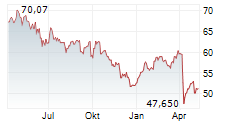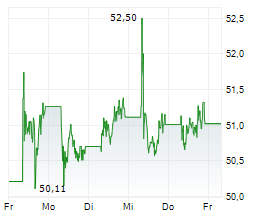TotalEnergies Energy Outlook 2025
To bring its contribution to the public debate around the energy transition, TotalEnergies (Paris:TTE) (LSE:TTE) (NYSE:TTE) publishes the 7th edition of its "TotalEnergies Energy Outlook", which presents an overview of the energy system and scenarios for its evolution up to 2050. (Documents available at this link).
Access to energy is essential to meet development needs
Today, there are still around 4.6 billion people that lack access to a level of energy that is deemed necessary for satisfactory human development, particularly in terms of access to healthcare and education. Our collective challenge is therefore to meet this legitimate demand for energy for the populations of emerging countries, while reducing greenhouse gas emissions. More energy, less emissions.
The stakes are clear: we must collectively reduce emissions from electricity generation, the leading global source of energy-related emissions with 14 billion tons of CO2 per year, and reduce the carbon intensity of transportation (the second-largest source of emissions) and heat generation for industrial and residential use.
What has happened since the Paris Agreement in 2015?
The carbon intensity of the global energy system is decreasing
Energy demand has continued to grow, accompanying rising living standards in China and emerging countries. CO2 emissions have also increased, but the growth in CO2 emissions has slowed since 2015, illustrating the deepening "decoupling" between growth in energy demand and lower growth in emissions: the carbon intensity of the energy mix has improved. Even though the world is still in an "energy addition" phase, the transition is already underway in developed countries and is approaching in other countries, particularly China.
This transition is supported by the significant penetration of renewables in global electricity generation, which accounted for almost 80% of global electricity production growth between 2023 and 2024. It is also supported, in developed countries, by the gradual reduction in coal-fired electricity generation, which is being replaced by gas-fired electricity generation, particularly in the United States.
The differences in trajectories between the major regional blocks are becoming more pronounced, with common challenges around energy security and affordability.
Against a backdrop of heightened geopolitical tensions and rivalries, different regions of the world are increasingly following different paths.
The United States has not only achieved energy independence thanks to shale oil and gas, but also became a net exporter of gas in 2017 and petroleum products in 2020. It has taken advantage of its abundant domestic gas production at competitive prices to reduce its CO2 emissions by gradually replacing coal-fired power plants with gas-fired power plants.
China continues to expand its dominance in low-carbon technologies through its integration across all of the value chains. It exports PV modules, batteries, and electric vehicles. This dynamic promotes innovation and lower costs. Although it continues to increase the installed capacity of coal-fired power plants, the use of more modern technologies and the massive penetration of renewable electricity sources are enabling it to gradually reduce the carbon intensity of its electricity mix and to envisage a peak in emissions in the coming years.
The European Union is leading the way in reducing emissions by continuing to decarbonize its electricity mix, but faces massive investment needs in its electricity grids and is confronted with the dual necessity of preserving the competitiveness of its industry and overcoming the reluctance of its population to accept the additional costs associated with decarbonizing energy use, with stagnant penetration of electric cars and heat pumps in particular.
Three scenarios for 2050
The Trends scenario reflects the current trajectory of various countries up to 2030 and assumes that existing public policies, particularly in China and Europe, as well as technological developments, will continue in order to stay on course. It takes into account the recent acceleration in the penetration of mature low-carbon technologies: solar and wind power to generate low-carbon electricity, electric vehicles and heat pumps to use it, particularly in China. However, infrastructure constraints, particularly electricity grids, geopolitical tensions and cost barriers to these technologies limit their large-scale deployment. In this scenario, primary energy demand for coal in the global energy mix gradually declines, approaching by 2050 the level it had in 2000. Global demand for petroleum products increases and plateaus by 2040 before beginning a slow decline. Demand for gas continues to grow until 2040, before reaching a plateau. This scenario leads to an estimated temperature increase of between +2.6° and +2.8°C by 2100.
The Momentum scenario is a more proactive forward-looking approach than current trends, assuming that OECD countries will achieve carbon neutrality by 2050 and China by 2060. It involves: (i) increased electrification of final demand in OECD countries and China, (ii) the near phase-out of coal in OECD countries, a sharp reduction of its use in China, and only a slight growth in India, (iii) the use of natural gas as a transition fuel for electricity and industry in all countries, and (iv) the deployment of new energies in non-electrifiable sectors (e.g., carbon-free hydrogen in industry, sustainable fuels in aviation and shipping) in OECD countries and China. In this scenario, fossil fuels still cover half of the growth in energy demand in India and the rest of the world due to insufficient low-carbon investments. This scenario leads to an estimated temperature increase of between +2.2° and +2.4°C by 2100.
The Rupture scenario is a normative scenario built around the energy system's end-point in 2050 that would limit the temperature increase to less than 2°C in accordance with the Paris Agreement. The realization of this scenario seems out of reach at present given the current state of geopolitical tensions, as it would require considerably enhanced multilateral cooperation in favor of global decarbonization. In this scenario, coal use in the electricity sector would decline much more rapidly, with remaining demand concentrated in industrial hard to abate sectors. The share of natural gas would remain broadly stable, while further electrification in end-use sectors would lead to a sharp increase in low-carbon electricity generation. This scenario leads to an estimated temperature increase of between +1.7°C and +1.9°C by 2100.
The three scenarios share several common features: electricity demand increases significantly, driven in part by new uses, natural gas emerges as a transition energy source, and the development of new oil and gas resources is necessary to withstand the natural decline of fields.
For decarbonization to progress beyond the Trends scenario, the world would need to collectively prioritize existing technologies that offer affordable CO2 abatement costs. In particular, OECD countries should deepen international cooperation to accelerate the energy transition in emerging countries. Such "global carbon arbitrage" approach would benefit the climate by accelerating emissions reductions and benefit consumers and businesses in OECD countries by reducing its cost. In practice, this requires progress on Article 6 of the Paris Agreement, which allows countries and companies to participate in a cross-border emissions reduction trading system.
Since the Paris Agreement, the global energy system has progressed by enabling the continued development of emerging economies while reducing the carbon intensity of the energy produced. Affordable low-carbon technologies are experiencing significant growth, for example solar panels or, in some parts of the world, electric vehicles. However, energy security and affordability issues act as a backstop for the often more local and less expensive carbon-based energies. We anticipate the emergence in the medium term of a transition phase that will follow the current phase of "energy addition," but it will be a long one: fossil fuels are expected to account for 60% of primary energy demand in 2050, compared to 80% today. To accelerate the transition, public policies must give maximum priority to solutions that offer the lowest cost for reducing CO2 emissions, while promoting the opportunities for cooperation created by the Paris Agreement's international carbon credit trading systemsaid Aurélien Hamelle, President for Strategy Sustainability.
About TotalEnergies
TotalEnergies is a global multi-energy company that produces and supplies energy: oil and biofuels, natural gas and green gases, renewables and electricity. Its more than 100,000 employees are committed to making energy more affordable, cleaner, more reliable and accessible to as many people as possible. Present in more than 130 countries, TotalEnergies places sustainable development in all its dimensions at the heart of its projects and operations to contribute to the well-being of populations.
@TotalEnergies TotalEnergies TotalEnergies TotalEnergies
Cautionary Note
The terms "TotalEnergies", "TotalEnergies company" or "Company" in this document are used to designate TotalEnergies SE and the consolidated entities that are directly or indirectly controlled by TotalEnergies SE. Likewise, the words "we", "us" and "our" may also be used to refer to these entities or to their employees. The entities in which TotalEnergies SE directly or indirectly owns a shareholding are separate legal entities. This document may contain forward-looking information and statements that are based on a number of economic data and assumptions made in a given economic, competitive and regulatory environment. They may prove to be inaccurate in the future and are subject to a number of risk factors. Neither TotalEnergies SE nor any of its subsidiaries assumes any obligation to update publicly any forward-looking information or statement, objectives or trends contained in this document whether as a result of new information, future events or otherwise. Information concerning risk factors, that may affect TotalEnergies' financial results or activities is provided in the most recent Universal Registration Document, the French-language version of which is filed by TotalEnergies SE with the French securities regulator Autorité des Marchés Financiers (AMF), and in the Form 20-F filed with the United States Securities and Exchange Commission (SEC).
Outlook
The TotalEnergies Outlook (TEO) sets out potential scenarios of energy mix evolution at world and regional levels until 2050, and the associated likely increase in global average temperature by the end of the century. It is based on in-house work conducted by the strategy and climate teams of TotalEnergies, and on data and input from third-party forecasters, data providers and consultants. The projections contained in the Trends outlook and the Momentum and Rupture scenarios rely on a set of assumptions that may or may not materialize in the future. The TEO is meant to contribute to the debate and discussions around the energy transition and, while it is taken into consideration by TotalEnergies to inform its strategic decisions, the TEO is not a presentation of TotalEnergies' strategy, which is presented in other publications (Sustainability and Climate Report, Investors' presentations).
View source version on businesswire.com: https://www.businesswire.com/news/home/20251104014217/en/
Contacts:
TotalEnergies
Media Relations: +33 (0)1 47 44 46 99 l presse@totalenergies.com l @TotalEnergiesPR
Investor Relations: +33 (0)1 47 44 46 46 l ir@totalenergies.com



